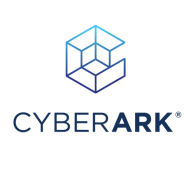

Omada Identity and CyberArk Identity compete in the identity and access management category. CyberArk Identity often has the upper hand for organizations requiring stringent security for administrative roles due to its robust privileged access management.
Features: Omada Identity offers a comprehensive governance feature set, strong process automation, and integration capabilities with a broad IGA feature set. CyberArk Identity is highly valued for its privileged access management, seamless onboarding, and security measures, including MFA and RBAC.
Room for Improvement: Omada Identity could enhance its user interface for better adaptability, expand out-of-the-box connectors, and simplify its complex setup processes. CyberArk Identity could improve MDM functionalities and governance scores, and enhance integration with legacy systems.
Ease of Deployment and Customer Service: Omada Identity offers deployment across public, hybrid, and on-premises environments with responsive technical support but needs improvement in communication. CyberArk Identity primarily supports cloud deployment with good technical support, although faster response times are desired.
Pricing and ROI: Omada Identity provides competitive pricing per managed user and simplified licensing, though cloud deployments can be costly. CyberArk Identity tends to be more expensive but offers flexibility in licensing, with costs justified for larger organizations due to its privilege management capabilities.
By the second month, we started seeing the benefits and achieved a return on investment.
They resolved the problem immediately after I reported it, on the same day, within one hour.
I have had conversations with them twice, and their technical support team was not that good.
There are times when there is a delay in handling my inquiries via email.
We do not contact their technical support directly because we have a service agreement already in place with them with some dedicated and some non-dedicated resources.
We can use it on different phones and computers, demonstrating its scalability.
By addressing the issues I have highlighted, such as stability and making it bug and lag-free, along with improving customer support, they can enhance its scalability.
There is a timeout period that I do not like, requiring repeated verification.
When you have it in the cloud, you have CyberArk every time you need it.
With respect to stability, I find that stability is very good.
Integration or deployment is extremely difficult for CyberArk Identity.
To enhance the product, they can consider improving the user interface of the software.
Something they could improve is the management of multifactor authentication.
The biggest issue, which is the reason why we are transitioning from their product to SailPoint, is the overall user experience.
I compared it with other products, and it does not require a heavy investment.
The pricing is acceptable.
Regarding pricing, it can be quite a lot for small companies.
They are lower than some of their competitors.
It protects our platform, application, network, and infrastructure resources on any device.
It impacts zero trust security strategies. It prevents lateral movements in the organization.
It's very low cost in comparison to Microsoft solutions.
Technically, the product does everything one would expect from an identity and access management platform.


CyberArk Identity is a versatile identity management solution suitable for a wide range of enterprises. It is designed to enhance enterprise security and improve user experience. Its focus on security, compliance, and operational efficiency, combined with positive user feedback, makes it a strong contender in the identity management space.
CyberArk Identity offers a robust suite of features to manage user identities and access privileges. It focuses on securing access to resources across various environments, including cloud and on-premises applications. Its capabilities include single sign-on (SSO), multi-factor authentication (MFA), lifecycle management, and privileged access management. These features are engineered to streamline access control, enhance security, and ensure compliance with regulatory standards.
According to our user interviews, CyberArk Identity is praised for its reliability and user-friendly interface. IT professionals highlight the ease of integration with existing systems, while business executives appreciate the visibility it provides into access and identity management across the organization. Users also commend the responsive customer support, which is crucial for enterprise-level solutions.
IT Professionals found that CyberArk Identity's focus on multi-layered security significantly reduced the risk of data breaches and unauthorized access. With a centralized dashboard and automation features, you can streamline identity and access management tasks, saving time and reducing complexity. Finally, it helps meet various compliance requirements.
Omada Identity is an identity governance and administration (IGA) solution designed to help organizations manage and secure digital identities and access across their IT environments. It focuses on enhancing security, compliance, and efficiency by automating identity management processes.
Omada Identity offers a robust set of features that streamline identity lifecycle management, access governance, and compliance reporting. It integrates with a wide range of IT systems, applications, and data sources, providing a centralized platform for managing user identities and access rights. The solution enables organizations to enforce security policies, ensure regulatory compliance, and reduce the risk of unauthorized access.
What are the critical features of Omada Identity?
What benefits or ROI items should users look for in the reviews when evaluating Omada Identity?
Omada Identity is widely adopted across various industries, including healthcare, finance, and manufacturing. In healthcare, it helps protect patient data and comply with regulations like HIPAA. In finance, it ensures compliance with SOX and other financial regulations. In manufacturing, it secures access to sensitive production data and intellectual property.
Pricing and licensing for Omada Identity are typically based on the number of users and the specific features required. Customer support is available through various channels, including online resources, support tickets, and professional services for implementation and customization.
In summary, Omada Identity is a comprehensive IGA solution that enhances security, compliance, and efficiency in managing digital identities and access.
We monitor all Identity Management (IM) reviews to prevent fraudulent reviews and keep review quality high. We do not post reviews by company employees or direct competitors. We validate each review for authenticity via cross-reference with LinkedIn, and personal follow-up with the reviewer when necessary.